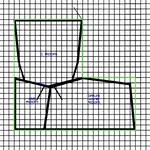X
xiwiwix
New member
I need help coming up with a design for my studio. I have my garage which I'm going to close off and it measures 21' x 13', and part of my formula living room which is 10' x 10'. The garage drops 3" so using that as part of the drum room is out of the question. Should I leave it as a rectangle and square? I'm thinking about having hard wood flooring put in the drum room and treating the walls with 703, the same with the control room but with 50% carpet. What other things should I think about?
The Green arrows are pointing to walls are going to be made, and the red-ish arrow is pointing to the wall which is going to be re-made to it will have a window and door to go in to the drum room.
The guys are coming Monday to start building.

The Green arrows are pointing to walls are going to be made, and the red-ish arrow is pointing to the wall which is going to be re-made to it will have a window and door to go in to the drum room.
The guys are coming Monday to start building.



 Exactly WHAT are they building? Without a design, what are you going to tell them? Are you..ahem...building TRANSMISSION LOSS assemblies or what? I don't get it.
Exactly WHAT are they building? Without a design, what are you going to tell them? Are you..ahem...building TRANSMISSION LOSS assemblies or what? I don't get it. 


 Codes my nuts!
Codes my nuts! 
 The reason behind that was because of the neighbors.
The reason behind that was because of the neighbors.


